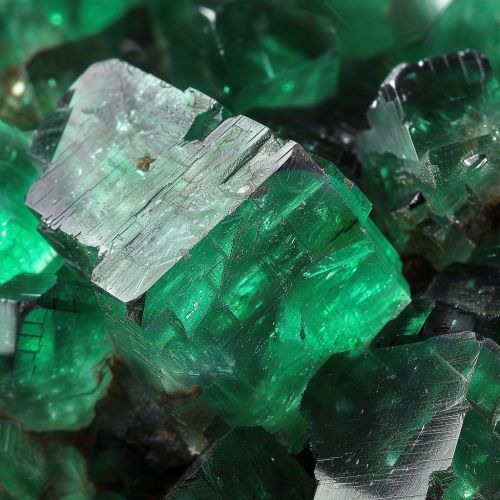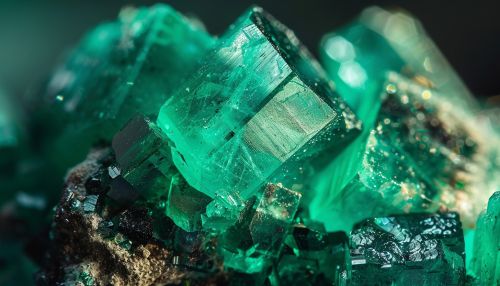Emerald
Introduction
Emeralds are a variety of the mineral beryl that are colored green by trace amounts of chromium and sometimes vanadium. They are one of the four recognized precious gemstones, the others being ruby, sapphire, and diamond. Emeralds are renowned for their rich green color and are often associated with qualities such as rebirth, love, and wisdom.


Geology and Formation
Emeralds are formed when beryl is subjected to extreme heat and pressure within the Earth's crust. This process, known as metamorphism, can take millions of years. The green color of emeralds is due to the presence of chromium and vanadium, which replace some of the aluminum in the beryl structure. The exact shade of green can vary depending on the relative amounts of these elements.
Mining and Distribution
Emeralds are mined in several countries around the world, with the most significant deposits found in Colombia, Brazil, and Zambia. Colombia is particularly renowned for the quality of its emeralds, which are often characterized by a deep, pure green color with a slight bluish tint.
Cutting and Polishing
The process of cutting and polishing an emerald is a delicate task, requiring a high degree of skill and precision. The goal is to maximize the stone's color, clarity, and carat weight, while minimizing any visible inclusions or flaws. The most common cut for emeralds is the emerald cut, a rectangular shape with stepped facets.
Value and Grading
The value of an emerald is determined by a number of factors, including its color, clarity, cut, and carat weight. The most valuable emeralds are those with a rich, intense green color and a high degree of transparency. Inclusions are common in emeralds and are often accepted if they do not affect the transparency of the stone.
Historical Significance
Emeralds have a long history of use in jewelry and decorative arts, dating back to ancient Egypt, where they were a favorite gemstone of Cleopatra. They have been used in various cultures to symbolize rebirth, fertility, and love.
Emeralds in Culture and Mythology
In many cultures, emeralds are associated with various myths and legends. For example, in ancient Rome, emeralds were believed to have a soothing effect on the eyes and were often used by soothsayers to foretell the future.
Synthetic Emeralds
In addition to natural emeralds, synthetic emeralds are also produced. These are created in a laboratory and have the same physical and chemical properties as natural emeralds. They are often used in jewelry and other applications where the cost of natural emeralds would be prohibitive.
